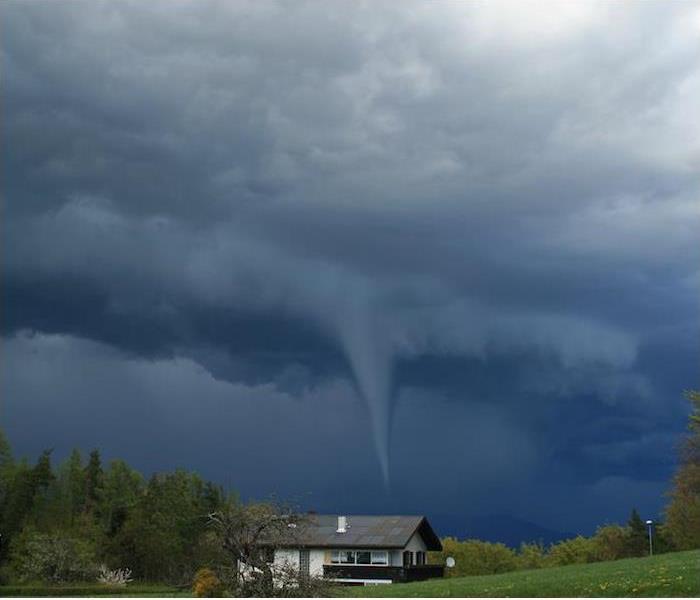Staying Safe During a Tornado | SERVPRO® of East Davie/Cooper City
4/30/2019 (Permalink)
With springtime comes unpredictable weather—and knowing this means you should always be prepared for the chance of severe thunderstorms that lead to perfect conditions for tornadoes.
The months of April and May are known for the highest occurrences of tornadoes at 30% and 24% respectively, meaning we are currently in tornado season all throughout the United States.
That’s why we’d like to share some tips and information on tornadoes that can help keep your family prepared for the worst possible scenario.
Each year in the United States, roughly 1,200 tornadoes occur, and they begin with severe thunderstorms, especially those known as “supercells.”
The formation of a tornado begins when changes in wind speed and direction create a horizontal spinning effect within a storm cell. This is then tipped vertical by rising air moving up through the thunderclouds.
You will, most likely not see the tornado’s signature funnel cloud at first as it is transparent, but the funnel will become visible as water droplets from the storm’s moist air condense or when dust and debris are picked up.
A typical tornado can grow to be 660 feet wide and will move at 10 to 20 miles per hour, although larger and faster ones have been observed. Hail and intense winds of more than 200 mph can accompany tornadoes.
We’ve already established that tornadoes typically occur in the spring and summertime. Late in the afternoon is when conditions become more favorable, but it is vital to remember that tornadoes can occur anytime and anywhere.
Do you know the difference between a tornado watch and tornado warning? A watch is issued when the conditions are favorable for tornadoes, while a warning is issued when a tornado has been reported by spotters or indicated by radar.
If a warning has been issued for your area, seek a safe shelter immediately, especially if you are in the path of the tornado.
- Underground options like a basement or storm shelter.
- The lowest part of your home, in an area that is away from outside walls, doors and windows. Interior closets and bathrooms can be ideal options.
- If you are outside, try to get to a sturdy building. Mobile homes and trailers are not a safe option.
- If on the road and no building access is available, do not get under an overpass or bridge. Instead, find a low, flat location and use your arms to protect your head and neck.
It’s always a good idea to make sure that you have flashlights, a battery-powered weather radio and extra batteries stored in your selected tornado shelter at home.
If you find yourself caught out on the road during a tornado, DO NOT attempt to outrun it. Also, when you are taking shelter in your home, you can provide additional cover by using furniture items like couch cushions, mattresses or blankets to help keep your head and neck covered.
Tornadoes can be devastating on the areas where they touch down. While meteorologists and weather services can provide some advanced warning to potential threats, tornadoes can still occur with little to no warning at all.
If your home or business has been damaged by a tornado, know that SERVPRO® of East Davie/Cooper City is ready and waiting to jump into action and get cleanup and restoration of your property underway.





 24/7 Emergency Service
24/7 Emergency Service